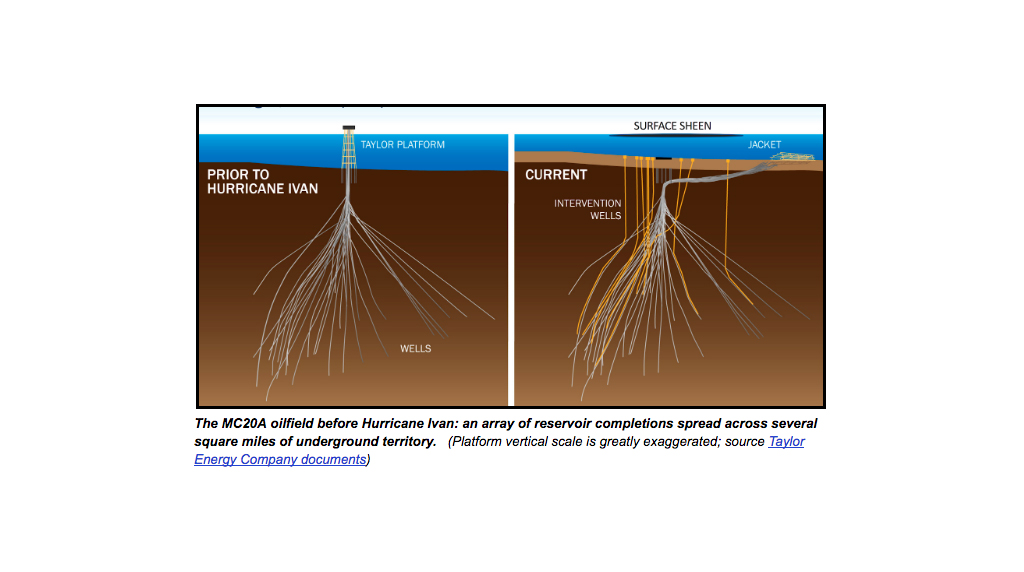March 27, 2019
As recently as March 13, 2019, pollution experts at the National Oceanic and Atmospheric Administration were reporting a 14 square-mile oil slick that originated out in the Gulf of Mexico about 12 miles from the Birdfoot Delta’s farthest bit of land. By now there are hundreds of satellite and aerial images telling the same, sorry story. The source is the wreck of MC20A, an oil platform owned by Taylor Energy Company that was destroyed by winds, waves, and mudslides spawned by Hurricane Ivan in 2004. Last fall, the Coast Guard and other agencies federalized the response to an oil spill that has been going on for fourteen years and counting, disinviting the company from the latest effort to stem the flow by attaching a massive containment dome to what remains of the platform. Although the company has long insisted that the spill is trivial–no more than 10 gallons per day–a growing chorus of scientists have disagreed, by orders of magnitude. My personal estimate is 96 barrels (4032 gallons) per day, and I tend toward the low end of the scientific opinions.
Why the Feds changed their mind, and how come it took so long, are questions I address in a report on the longest offshore oil spill in U.S. history. I tell the story from my perspective as an oceanographer who studies natural and unnatural oil inputs to the ocean, and based on what is now over seven years of funded research on MC20A.
Storms like Ivan seem to be growing more common. The sediments lost from the drastic reduction of Louisiana wetlands have been deposited on the slope in huge mud lobes–some of which will inevitably slide toward the sprawling network of aging platforms and pipelines that surrounds the Delta. The lessons we learn from MC20A, and the response by a unified command under the direction of the US Coast Guard, may be put to the test again, possibly much more severely than with MC20A.
Will we be ready?
Read my report to learn more.
__________________________________________________________________________________________________________
This is a guest post about the ongoing Taylor Energy oil spill from Dr. Ian MacDonald, oceanographer at Florida State University. This article originally appeared online here.


















 back to top
back to top